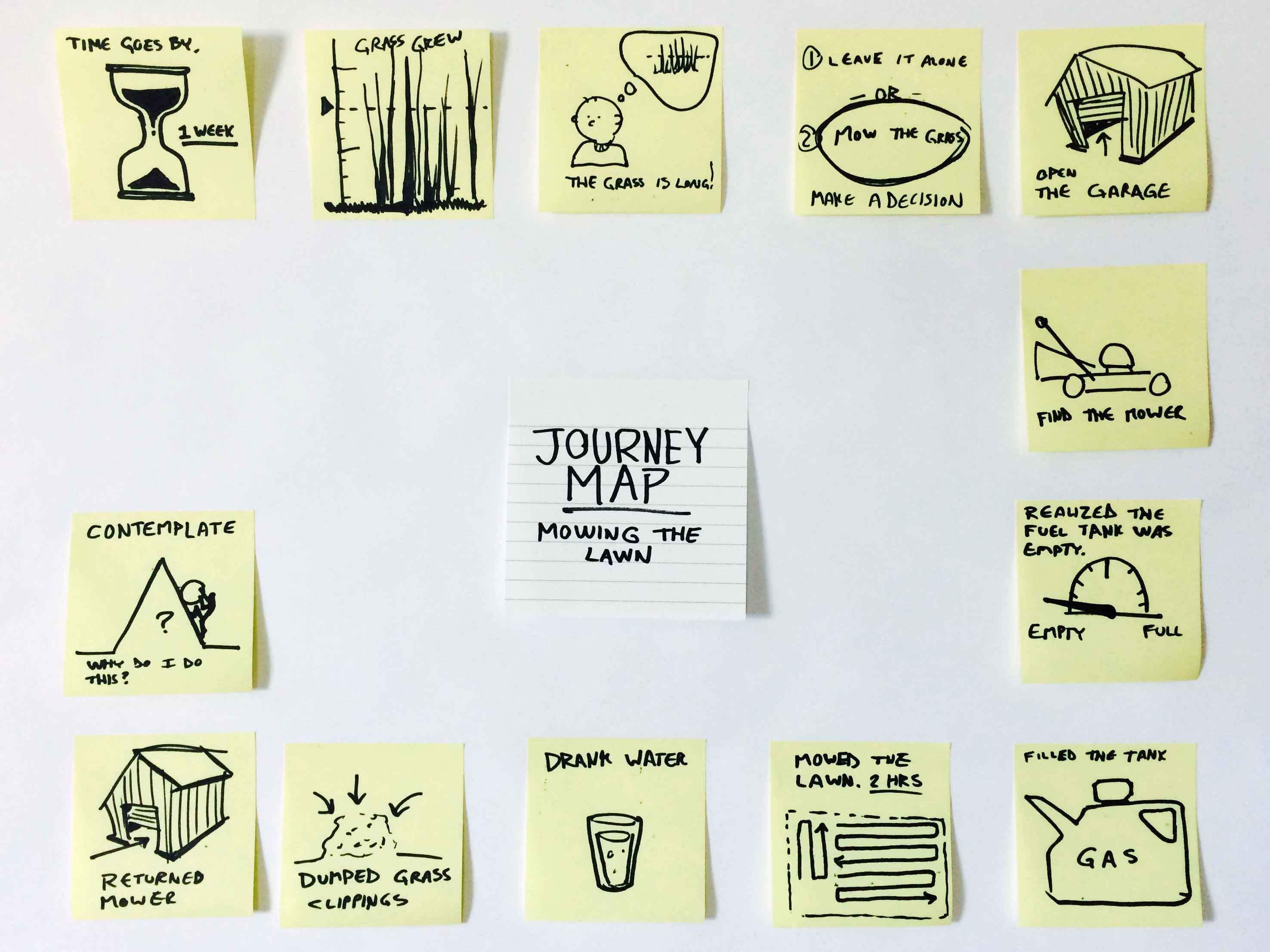
Discover: Journey Map
A journey map is great way to visualize an entire process of an interaction. By visualizing each step, you will better understand the nuances of an experience.
Example steps for a journey map: Mowing the lawn
- One week passes since the lawn was mowed last
- The grass grows longer than the local township ordinance allows
- I realize the grass is too long.
- I decide to mow the lawn with my lawnmower.
- I open the garage
- I take the lawnmower out of the garage.
- I check to see that it has enough gasoline - it is low.
- I fill the fuel tank with gasoline.
- I start to mow the grass.
- I stop to get a drink of water halfway through, because I am dehydrated.
- I empty the grass clippings many times.
- I finish and put the lawnmower back into the garage.
- I contemplate the Sisyphean process of lawn-care

Materials
- Pen
- Paper
- Post-its
- Markers
- Poster-board or open wall space
Time
30 - 60 minutes
Instructions
- In the interview, your participant answered questions about a challenge they face or faced. This will be the focus of the journey map.
- You will now assume their perspective. From the first-person perspective, write short 1-5 word descriptions of the most core moment(s) of engagement on Post-its. For example: "I realized the grass was too long."
- Write down the name of any other key moments on separate Post-it notes. Try to identify as many as you can. Consider what the most critical aspects of what the experience might be.
- Place the Post-it notes in order as you would likely experience them.
- This journey map is useful to help you communicate your experience to others and identify moments for intervention, change, and adaptation.
Post work to the Studio
- Upload photograph or scan of your journey map.
Citation
Adapted from: http://www.designkit.org/methods/63